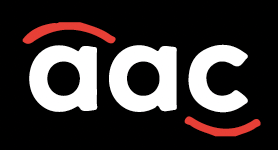Green roofs, also known as living roofs, are those which are partially or completely covered with vegetation planted over a waterproof membrane. The advantages of green roofs include providing multiple environmental, economic, and social benefits, especially in urban areas where green space is limited. For businesses and government buildings, green roofs offer a sustainable solution that can enhance building performance and contribute to corporate social responsibility goals.
One of the significant benefits of green roofs is their ability to help mitigate the urban heat island effect, manage stormwater runoff, and improve air quality. They are particularly valuable in densely populated cities where environmental concerns are paramount. By incorporating green roofs, businesses and government entities can reduce energy costs, extend the lifespan of their roofing systems, and create aesthetically pleasing spaces that benefit employees and the community. There are various types of sustainable roofs, and green roofs are among the most effective options in this category.
The London School of Economics, for example, has implemented a green roof to improve energy efficiency and provide a green space in the heart of the city, showcasing the practical advantages of a green roof in modern urban settings.
Benefits of Green Roofs
Green roofs offer a multitude of benefits that make them an attractive option for businesses, corporate entities, and government buildings. These green roof benefits can be broadly categorized into environmental, economic, and social advantages.
Environmental Benefits: Green roofs help combat the urban heat island effect by cooling the surrounding air, thus reducing the need for air conditioning in buildings. They also play a significant role in stormwater management by absorbing rainwater, reducing runoff, and minimizing flood risks. Additionally, green roofs improve air quality by trapping dust and pollutants and increasing oxygen production through photosynthesis.
Economic Benefits: From an economic perspective, green roofs can lead to substantial energy savings. The insulating properties of the vegetation and soil layers reduce heating costs in winter and cooling costs in summer. Moreover, green roofs protect the underlying roofing materials from UV radiation and extreme temperature fluctuations, thereby extending the roof’s lifespan and reducing maintenance costs. Businesses may also benefit from tax incentives and grants available for green roof installations in the UK, further enhancing the financial advantages of green roofs.
Social Benefits: Green roofs contribute to the well-being of building occupants and the surrounding community. They enhance the aesthetic appeal of buildings, creating visually pleasing environments that can improve employee morale and attract customers. Green roofs can also provide recreational spaces for employees and serve as habitats for urban wildlife, promoting biodiversity.
As another example in the UK, the green roof on Barclays’ headquarters in London demonstrates the economic and environmental benefits of this technology. The roof not only enhances energy efficiency but also provides a valuable green space in the urban landscape.
By adopting green roofs, businesses and government buildings can achieve significant environmental, economic, and social benefits, making them a worthwhile investment in sustainability and corporate responsibility.
Integrating Green Roofs with Solar Panels
Integrating green roofs with solar panels creates a synergistic relationship that enhances the performance and benefits of both systems. This combination maximizes the environmental and economic advantages, making it an appealing option for businesses and government buildings.
Synergies Between Green Roofs and Solar Panels: Green roofs can improve the efficiency of solar panels by cooling the surrounding air, which helps the panels operate more effectively. The vegetation on green roofs reduces ambient temperatures, thereby lowering the temperature of the solar panels and increasing their energy output. This cooling effect can lead to up to a 16% increase in solar panel efficiency during hot weather.
Types of Green Roofs
There are several types of sustainable roofs, and green roofs are among the most popular. Green roofs come in several types, each with distinct characteristics and benefits. The primary types are extensive, intensive, and biodiverse roofs, each suited to different applications and requirements.
Extensive Green Roofs: Extensive green roofs are lightweight systems with a shallow growing medium, typically ranging from 2 to 6 inches deep. They are low-maintenance and designed to support drought-tolerant plants such as sedums and grasses. These roofs are ideal for buildings where weight is a concern and are primarily used for environmental benefits rather than recreational purposes.
Intensive Green Roofs: Intensive green roofs, also known as rooftop gardens, have a deeper growing medium, often exceeding 6 inches, and can support a wider variety of plants, including shrubs and small trees. They require regular maintenance and irrigation but provide significant recreational and aesthetic benefits. Intensive green roofs can be designed as accessible green spaces, making them suitable for commercial buildings looking to create attractive, usable outdoor areas.
Biodiverse Roofs: Biodiverse roofs, or brown roofs, are designed to promote local biodiversity by using a variety of plants and substrates that create habitats for wildlife. These roofs are often tailored to meet specific environmental goals, such as supporting native flora and fauna or creating conditions for certain species to thrive. Biodiverse roofs are an excellent choice for businesses and government buildings aiming to enhance urban biodiversity and meet sustainability targets.
By understanding the different types of sustainable roofs and the specific advantages of a green roof, building owners can make informed decisions that align with their sustainability objectives and operational requirements.
